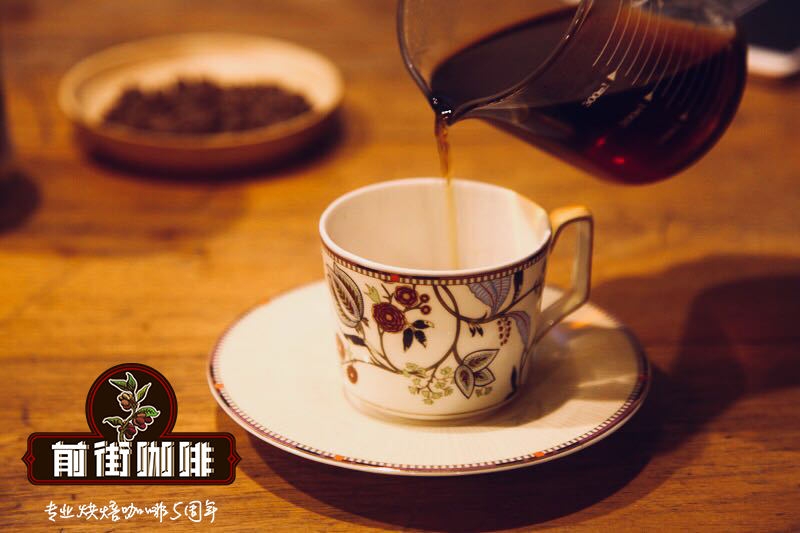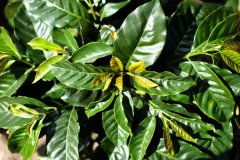Coffee varieties and flavor characteristics of coffee from various producing areas
Professional coffee knowledge exchange more coffee bean information please follow the coffee workshop (Wechat official account cafe_style)

1. Central and South America:
Country / Origin: Costa Rica
Representative varieties: Kaddura, Katuai (mixed species of Kaddura and Mondonovo)
Flavor introduction: the fruit is sour and sweet, plum, carambola, raisin, mango, passion fruit, etc., unique flavor, pleasant. Beans treated by Colombian honey must be tried!
Country / Origin: Panama
Representative variety: Rose summer
Flavor introduction: Jasmine, camellia aroma, fruit flavor levels are quite rich-citrus, peach, berries, cantaloupe, etc., the sweetness of the shed, long aftertaste, the name "geisha" must be known to everyone.
Country / Origin: Nicaragua
Representative varieties: Kaduai, Pakamara
Flavor introduction: sour citrus, litchi, melon, brown sugar sweetness, cocoa aftertaste; Pacamara also has walnut flavor.
Country / Origin: Peru
Representative varieties: Tibika, Mondonovo, Katim, etc.
Flavor introduction: mild and insipid flavor, moderate sweetness but lack of multi-layered sense, pleasing lies in the high alcohol thickness.
Country / Origin: El Salvador
Representative variety: Pacas
Flavor introduction: solid and balanced taste, creamy, nutty, smooth and mellow.
Country / Origin: Guatemala / Vivette Nan Fruit region
Representative varieties: bourbon, Kaddura, Katuai
Flavor introduction: fruity, rich and varied sweetness, nutty, cocoa flavor, mellow feeling.
Country / Origin: Jamaica
Representative variety: Jamaican Blue Mountain species (Tibika derived species)
Flavor introduction: pure and soft, dark chocolate rhyme, smooth and sweet, do you know why Zhenlan Mountain is expensive? The flavor is so balanced that it has no characteristics-it is its greatest feature!
Country / Origin: Brazil
Representative varieties: bourbon, Kaddura, Katuai (picture shows yellow bourbon species)
Flavor introduction: low acidity, nutty and dark chocolate flavor, mellow and long-lasting.
Country / Origin: Colombia
Representative varieties: Kaddura, Tibika
Flavor introduction: citrus, nut, chocolate flavor, low sour taste, more balanced sour and bitter.
Country / Origin: Mexico
Representative varieties: bourbon, Tibica, Kaddura, Marago Rippi
Flavor introduction: toffee, sugar sweet, obvious dark chocolate and aftertaste.
two。 Africa:
Country / Origin: Ethiopia
Representative variety: Yega Xuefen
Flavor introduction: Jasmine, rose aroma, citrus, lemon-like fresh fruit acid, light taste.
Country / Origin: Rwanda
Representative variety: bourbon
Flavor introduction: Jasmine charm, apple, grape, apricot, acidity is bright, mellow and moderate.
Country / Origin: Malawi / Mzuzu
Representative varieties: Rosa 20%, Katim 80% (percentage of acreage in producing area)
Flavor introduction: Maple leaf, vanilla flavor, high sweetness-if dry, honey in general!
Country / Origin: Burundi
Representative variety: bourbon
Flavor introduction: grapefruit, caramel, diversified berry flavor, low bitter and smooth, as light as tea.
Country / Origin: Kenya
Representative varieties: SL-28, SL-34 (bred by Bourbon and Tibika)
Flavor introduction: berries, citrus and other fruits taste rich, intuitive acidity and obvious sweet flavor. (AA: bean ruler greater than 18 mesh / 7.22mm size)
3. Asia:
Country / Origin: Indonesia / Sumatra
Representative variety: Mantenin-Tibika
(Bergandal, Sidikkalang and Djmber have crossed with Robusta in different periods.)
Flavor introduction: general Mantenin, full-bodied, dark chocolate, cocoa flavor, with soil, pine, mountain wood or traditional Chinese medicine flavor. Honey-treated mantenin has undergone earth-shaking changes from ordinary mantenin, with honey, creamy sweetness and smoothness, chocolate flavor, mellow, slightly sour-with a hint of tropical fruit.
Country / Origin: Papua New Guinea
Representative varieties: Tiebika, Bourbon
Flavor introduction: tropical fruit, sugar sweetness, nut, chocolate flavor, light cream texture mellow and smooth.
Country / Origin: China / Yunnan
Representative varieties: Katim, Tibika, Bourbon
Flavor introduction: high-quality batches have jasmine fragrance, honey grapefruit tea-like sweetness, the latter part is like cream chocolate.
Important Notice :
前街咖啡 FrontStreet Coffee has moved to new addredd:
FrontStreet Coffee Address: 315,Donghua East Road,GuangZhou
Tel:020 38364473
- Prev

Why should coffee beans be roasted? how to choose the input temperature when roasting coffee beans?
Professional coffee knowledge exchange more information about coffee beans Please follow the coffee workshop (Wechat official account cafe_style) Coffee beans are blue-green at first, but why do they turn brown? This is inseparable from the roasting of coffee. Due to the depth of roasting, the depth of brown will be different. Coffee roasting is a science, including the age, density, hardness and moisture content of raw beans.
- Next

Do 12 Starbucks regular coffee beans taste good? which Starbucks coffee beans have low acidity?
Professional coffee knowledge exchange more coffee bean information Please follow the coffee workshop (Wechat official account cafe_style) Yes, just like every cafe has its own House Blend, which is used to make the most important coffee base for coffee drinks, Espresso beans have different formulations. In Xing Dad's more than 20,000 stores around the world, the hand-made drinks he drank.
Related
- Beginners will see the "Coffee pull flower" guide!
- What is the difference between ice blog purified milk and ordinary milk coffee?
- Why is the Philippines the largest producer of crops in Liberia?
- For coffee extraction, should the fine powder be retained?
- How does extracted espresso fill pressed powder? How much strength does it take to press the powder?
- How to make jasmine cold extract coffee? Is the jasmine + latte good?
- Will this little toy really make the coffee taste better? How does Lily Drip affect coffee extraction?
- Will the action of slapping the filter cup also affect coffee extraction?
- What's the difference between powder-to-water ratio and powder-to-liquid ratio?
- What is the Ethiopian local species? What does it have to do with Heirloom native species?

